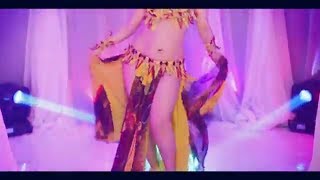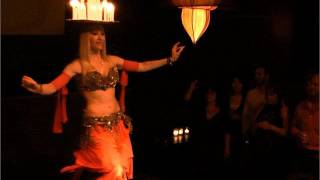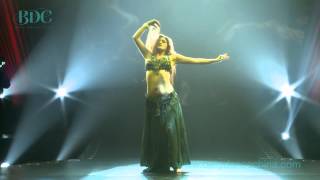Saturday, 29 November, 2025г.
















Где искать: по сайтам Запорожской области, статьи, видео ролики
пример: покупка автомобиля в Запорожье
hot belly dance
"Belly dance" is a translation of the French term danse du ventre, which was coined in 1864 as a snide nickname for the Orientalist painting The Dance of the Almeh by French artist Jean-Léon Gérôme.[9][10]
The painting depicts a woman dancing before an audience of seated soldiers in a fantasy Middle Eastern setting. The dancer's costume, with its small vest and gauzy blouse, seems to have been inspired by contemporary Ghawazi women's clothing. Where a Ghawazi woman of the period would have worn an elbow-length blouse tucked in to her skirt at the waist, however, this dancer's sheer blouse is open over her bare breasts and her nude abdomen is thrust toward the viewer of the painting.
Over time, danse du ventre came to be used in French for all solo, torso-articulated dances of Middle Eastern origin. The English translation "belly dance" seems to have made its first appearance in 1889 in reference to the Egyptian dancers who performed at the Exposition Universelle that was held in Paris that year.[9][10]
In Arabic, the dance is known as Raqs Sharqi ("Eastern Dance") or as Raqs Baladi in Egyptian Arabic ("Country Dance" or "Folk Dance").
Dalilah filming Keyf Ansak in Cairo, Egypt 1957.
Belly dance is primarily a torso-driven dance, with an emphasis on articulations of the hips.[11] Unlike many Western dance forms, the focus of the dance is on isolations of the torso muscles, rather than on movements of the limbs through space. Although some of these isolations appear similar to the isolations used in jazz ballet, they are sometimes driven differently and have a different feeling or emphasis.
In common with most folk dances, there is no universal naming scheme for belly dance movements. Some dancers and dance schools have developed their own naming schemes, but none of these is universally recognized.
Теги:
belly dance arabic songs dance arabic music bellydance belly dancing dancer dancing tribal massive bauchtanz world fusion best dancer how to dance performance beautiful girls dances best of dance
Похожие видео
Мой аккаунт


 У вашего броузера проблема в совместимости с HTML5
У вашего броузера проблема в совместимости с HTML5


